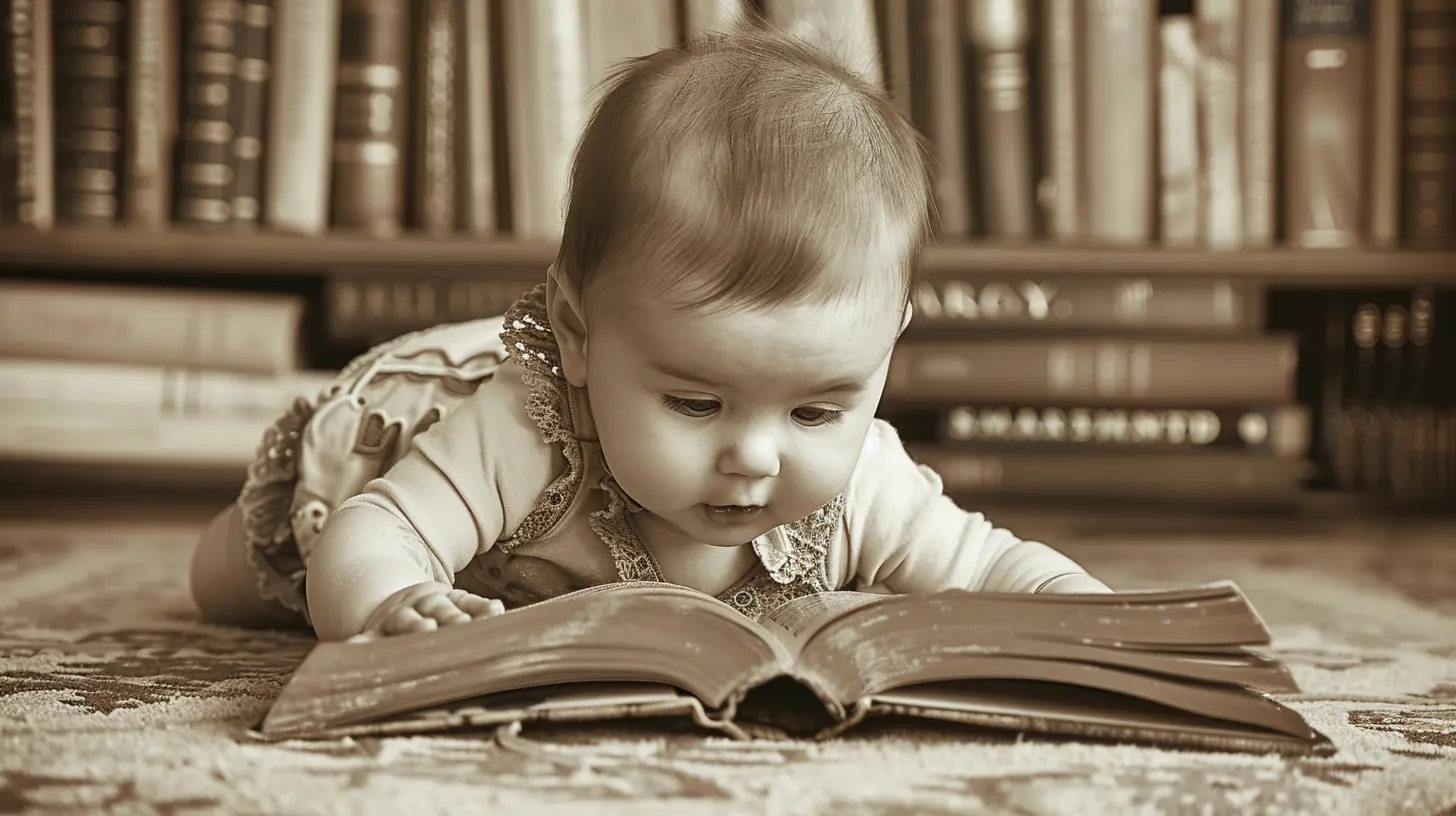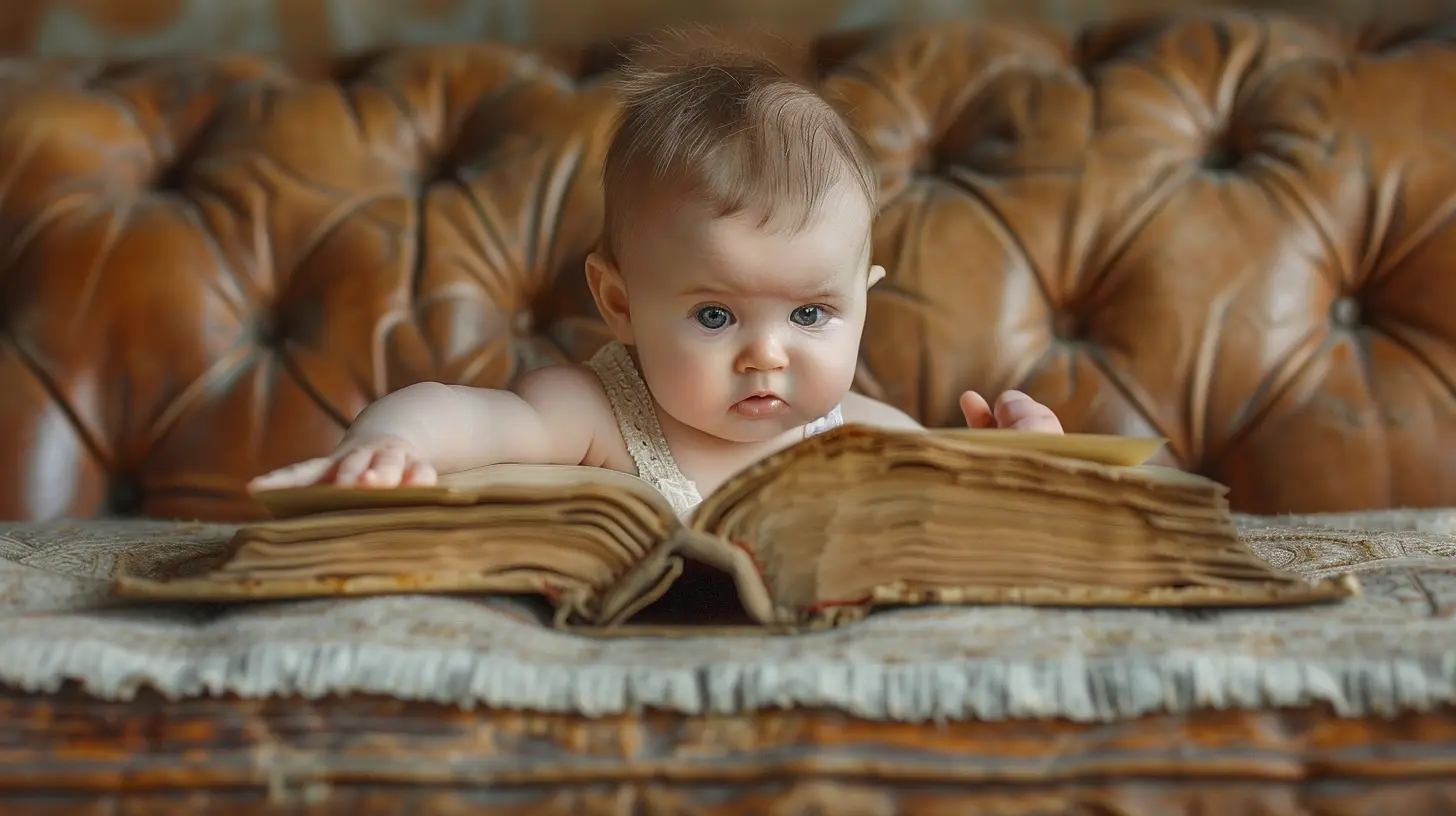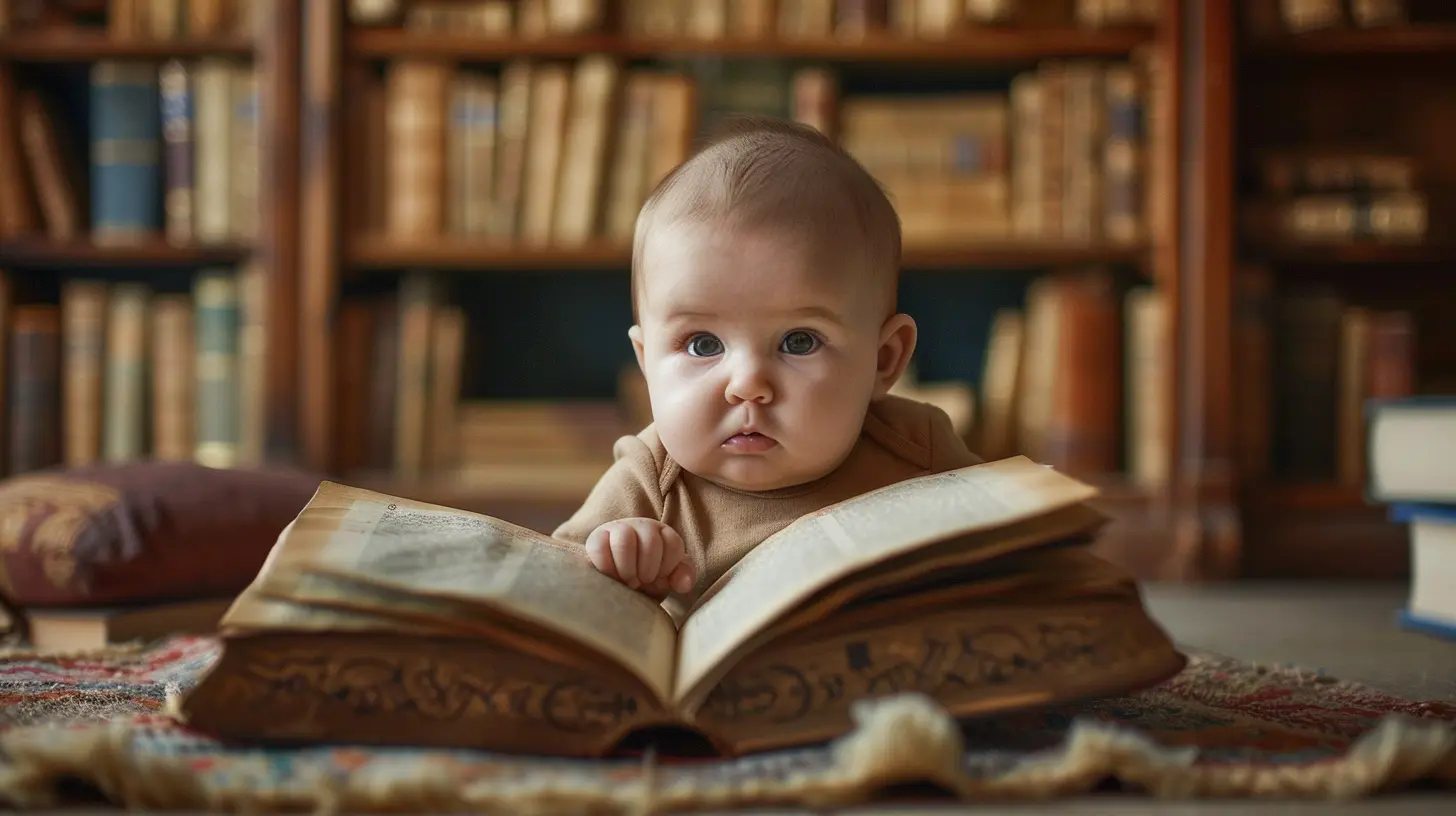How to Introduce Your Baby to Books and Reading
18 October 2025
So, you’re holding your little bundle of joy and wondering, “When is the right time to introduce books?” Great question — and guess what? It’s never too early. Yep, reading to your baby can start way before they can even say "mama" or "dada".
In this guide, we’re diving into the why, when, and how of introducing books to your baby. Whether you're a first-time parent or adding another reader to your growing family, this one's for you. We'll keep it simple, honest, and packed with tips you’ll actually use.
Why Reading to Babies Matters (Even If They Have No Clue What You're Saying)
You might be wondering, “If my baby can’t talk yet, how does reading help?” Think of your baby’s brain like a sponge—right now, it’s soaking up everything. Even the sound of your voice is doing more than you think.Reading aloud isn’t just about the words on the page. It’s about bonding, building language skills, and sparking imagination. It creates a warm, safe routine from the very beginning.
Here’s what your baby gets out of reading:
- Language development (even before they speak)
- Listening and memory skills
- Cognitive development through exposure to shapes, colors, and patterns
- Emotional bonding (because your voice is their favorite sound!)
- A head start for school (believe it or not)
Think of every page read as another brick in the foundation of their future learning.
When Should You Start Reading to Your Baby?
Truthfully? From the newborn days. Yep, babies love the rhythmic sound of your voice, even if they don't understand words yet. Don’t stress about needing fancy picture books right away. At first, it’s all about connection and routine.Here’s a rough guide:
- 0–3 months: Read anything—baby books, your favorite novel, even a magazine. It’s about voice and bonding.
- 3–6 months: Start with high-contrast books. Black-and-white patterns hold their gaze like magic.
- 6–12 months: This is when they’ll start grabbing books (and possibly chewing them). Board books are your new best friend!
- 12+ months: They begin turning pages with help, pointing at pictures, and reacting to stories. Storytime becomes interactive.
How Often Should You Read to Your Baby?
Daily. Consistency is key here. You don’t need hour-long story sessions (hello, newborn sleep chaos!). Just a few minutes here and there goes a long way. Think of it like brushing teeth—you do it regularly, and it adds up.Try to fit reading into their routine:
- Morning cuddles? Read a book.
- Waiting at the doctor’s office? Pull one from your diaper bag.
- Wind down before bed? Perfect storytime.
The idea is to make books a natural, comforting part of their everyday life.
Choosing the Right Books for Your Baby’s Age
Choosing the right books can feel like picking a bottle of wine—so many choices! Thankfully, babies aren’t picky (yet). But keeping their developmental stage in mind can really elevate the experience.0–6 Months:
- High-contrast images- Simple text or no text
- Soft cloth or waterproof bath books
- Books with rhythm or rhyme
Look for titles like "Hello, Baby" or "Black & White" – easy, engaging, and safe for tiny hands.
6–12 Months:
- Sturdy board books- Interactive features like lift-the-flap or touch-and-feel
- Books with animal sounds or repetitive phrases
Babies at this age love repetition. It helps them learn. Yes, you might read the same book 14 times in one day—and that’s okay!
12–24 Months:
- Books that tell simple stories- Books that name everyday objects
- Books with diverse characters and relatable experiences
Favorites like "Goodnight Moon", "Brown Bear, Brown Bear, What Do You See?" or "Dear Zoo" become staples.
Tips for Making Reading Fun (Not a Chore)
Let’s face it: Some days, you’re surviving on coffee and crumbs. Reading might feel like just another thing on the to-do list. But don’t worry—you’ve got this.Here’s how to make reading something you and your baby look forward to:
1. Use Your Voice Like a Pro
Give each character a different voice. Go dramatic. Go silly. Your baby won’t judge—they’ll love it.2. Make It Interactive
Point at pictures. Ask questions, even if your baby can’t answer yet. (“Where’s the cat?”). They’ll learn through repetition.3. Let Baby Hold the Book
Yes, they might drool on it. It's fine. Letting them explore the book helps develop fine motor skills and builds interest.4. Follow Their Lead
If they crawl away mid-page, don’t sweat it. Go with the flow. Keep reading light and playful—not a forced mission.5. Create a Cozy Spot
Set up a little reading nook with soft pillows, a small bookshelf, or a basket of books. It signals that reading is special.Common Questions Parents Have (And Honest Answers)
"My baby just chews on books. Is that okay?"Totally normal! Babies explore the world with their mouths. Choose board books or cloth books that can handle a little nibble.
"What if my baby won't sit still?"
That’s okay too. Some babies are squirmy by nature. Keep reading short, rhythmic, and fun. Even if they're moving, they’re still listening.
"Do audiobooks or story apps count?"
They can, especially during car rides. But nothing replaces the sound of your voice and the one-on-one connection.
"My baby seems bored. Should I stop reading?"
Try a different book, use silly voices, or switch to more interactive styles. Sometimes it’s about the book, not the baby’s interest in reading itself.
Creating a Reading Routine That Sticks
Think of reading as part of your family’s rhythm. It doesn’t have to be rigid. Some families read after breakfast. Others make it a bedtime ritual. Do what works best for your baby’s temperament—and yours.Here’s a simple daily idea:
- Morning Snuggle + Short Book
- Afternoon Wind-Down + Engagement Book
- Bedtime Story + Calming Book
By repeating this routine, your baby starts associating books with comfort and connection.
When Reading Sparks a Lifelong Love
Introducing books early isn’t about raising the next Shakespeare (although, hey, you never know!). It’s about setting the stage. You're giving your child the tools to communicate, imagine, and understand the world.Reading opens up a world of possibilities—and your baby is at the very start of that journey.
And who knows? That little one who’s chewing on "The Very Hungry Caterpillar" today might become the teen curled up with Harry Potter tomorrow.
Bonus: Favorite First Books for Babies (Parent-Approved!)
Here’s a quick list of baby-loved (and parent-approved!) books that hit the sweet spot of simple, engaging, and sturdy:- Goodnight Moon by Margaret Wise Brown
- Brown Bear, Brown Bear, What Do You See? by Bill Martin Jr. & Eric Carle
- Where’s Spot? by Eric Hill
- The Going-To-Bed Book by Sandra Boynton
- Peek-a-Who? by Nina Laden
- Baby Faces by DK Publishing
- First 100 Words by Roger Priddy
You don’t need a massive library. A few great books read often matter more than a shelf full of untouched ones.
Final Thoughts: You're Writing the First Chapter
Introducing your baby to books isn’t about doing it “perfectly.” It’s about being present. In those quiet moments—snuggled up with a story—you’re doing something wonderful. You’re helping them fall in love with words, with learning, and with you.So don’t overthink it. Just start reading.
One story today. Another tomorrow. You’re writing the first chapter of their lifelong love for reading—and that’s a beautiful thing.
all images in this post were generated using AI tools
Category:
Baby CareAuthor:

Tara Henson
Discussion
rate this article
1 comments
Betsy Coffey
This article beautifully highlights the joy of introducing your little one to the world of books! Creating a cozy reading routine not only fosters a love for stories but also strengthens your bond. Keep nurturing their imagination, and watch them thrive in their literary adventures!
October 31, 2025 at 4:39 AM


